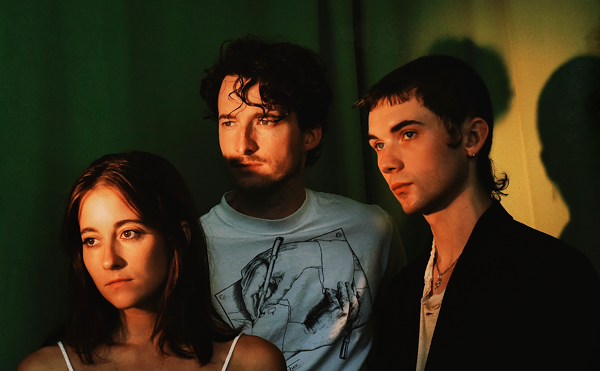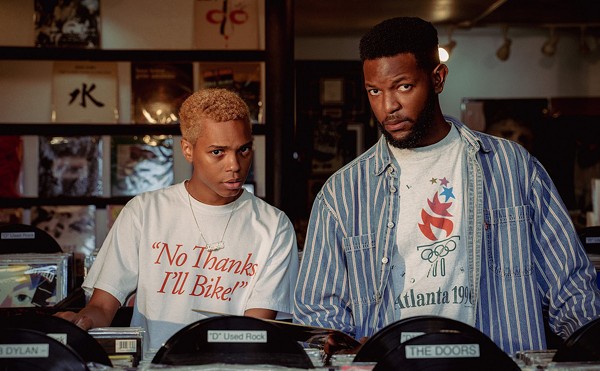Lots of tape rolled during Miles Davis' storied career, and that has provided an ongoing boon to his fans in the 20 years since his death. Now comes the latest development in Miles' posthumous catalogue, meticulously stewarded by Sony Legacy: three CDs capturing three gigs in Antwerp, Copenhagen and Paris, as well as a DVD of two sets in Germany and Sweden — all of it culled from state-owned TV and radio sources.
Live in Europe 1967, recorded during a 10-day stint as part of a "Newport Jazz Festival in Europe" tour, features Miles' "Second Great Quintet" — saxophonist Wayne Shorter, pianist Herbie Hancock, drummer Tony Williams and bassist Ron Carter.
Pick an adjective: remarkable, essential, jaw-dropping. But be forewarned — this is not beginners' stuff. The Quintet was at the peak of its powers, like five fingers on a hand, moving dexterously, harmoniously, at times discordantly. The music, while consistently coherent and not dissonant in the vein of free jazz, brims with abstractions and minute detail. The collection is best suited for entrenched aficionados.
These shows came at an intriguing time in the trumpeter's career. That summer, the band had cut Nefertiti, Miles' last all-acoustic album. A couple of months after these late October/early November gigs, Miles would introduce Rhodes piano on Miles in the Sky, the beginning of an inexorable push toward "electric Miles."
The Quintet, still exclusively acoustic, was most certainly fraying during these Europe '67 shows — it would dissolve the following year — but the palpable restlessness never undermines the music. Rather, it serves to boost the intensity. Williams, especially, is like a caged animal. Still 21, he has transitioned from the propulsive groove machine of Live at the Plugged Nickel less than two years before, to a rambunctious stalker of his kit, spewing a stream of elaborate fills, violent cymbal bashes and bursts of cacophony. He changes the tempo and feel on a whim. Williams seems incapable of riding a groove for very long, and at times his busy-ness can be a deterrent. Yet his ability to play with such free-form ferocity without undermining the ensemble's flow is nothing short of astonishing.
You can't help but think that Miles grew impatient with Williams' antics at times, although his poker-face mien on stage never gave it away. Hancock and Shorter thrived on it, however. An example (among multitudes): During the Copenhagen version of "Agitation," Hancock begins his solo contemplatively over Williams' percolating rhythm. The drummer then shifts into warp-speed bop, but the pianist resists, continuing to play at a more relaxed tempo, building the tension between the two. Gradually, Hancock pulls even with Williams and the two engage in a rousing sprint.
And what of Miles, the boss and at 41, the elder of the group? His playing is superb — with a rich, warm tone and a calm agility. (Just a couple of years earlier, on Plugged Nickel, his trumpet work was unkempt and careless.)
While the full-length DVD does not have the portability of the CDs, it's fascinating to watch the Quintet at work. The black-and-white picture is adequate, the sound quality superb. Arrayed across capacious theater stages, the Quintet is in large part a taciturn bunch, not given to eye contact or smiles (Williams is the only animated one). The video is a sublime portrait of five men who are both hyper aware of each other and deeply immersed in his own expression.
To accentuate the band hierarchy, the four sidemen, if you can call them that, walk on stage in black tux and bowtie. Miles, emerging last, looks ready for a walk-on part in Mad Men: gray pinstripe suit — slim-cut, double-breasted — with dapper pocket square and chunky chronograph watch. He could be on the cover of next month's GQ.
Watching this, you can't help but think that these are some seriously cool motherfuckers. And of course they absolutely were, timelessly so. But by a contemporary standard, they were not. These men, their music and their look were growing more and more anachronistic, especially in the States. The Second Great Quintet's run was coming to an end, at any rate. Elsewhere, Hendrix, Sly and others were doing flamboyantly psychedelic rock and funk. Miles was listening. And watching. And wondering whether his music was relevant any longer. It wouldn't be too long before the one-time Charlie Parker sideman was blasting out his own funk-rock and dressing in his own neon stage outfits.
Whether that was a good or bad thing is another debate for another time. What's beyond argument is that the Miles Davis Quintet in late 1967 was as good as small-group jazz got.
5 Stars

















